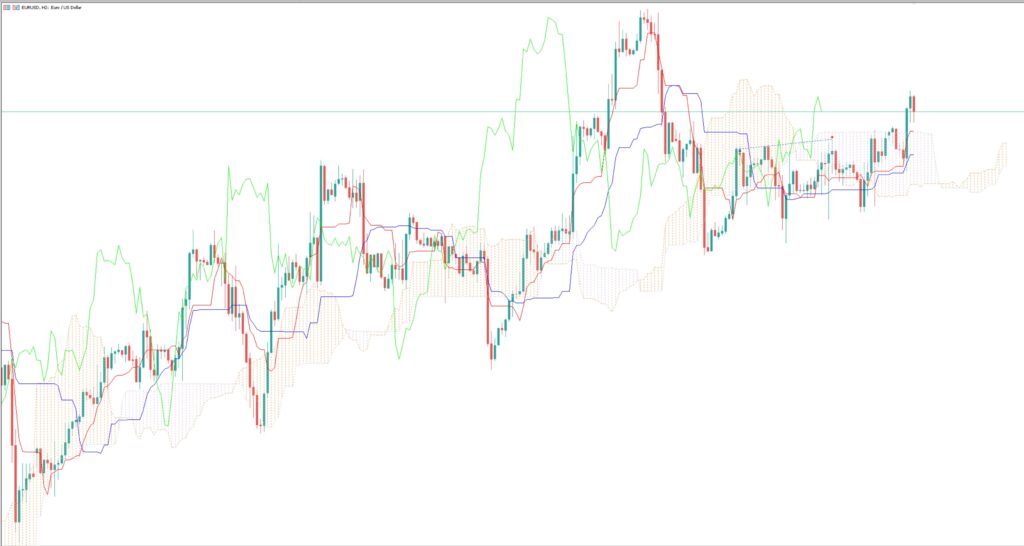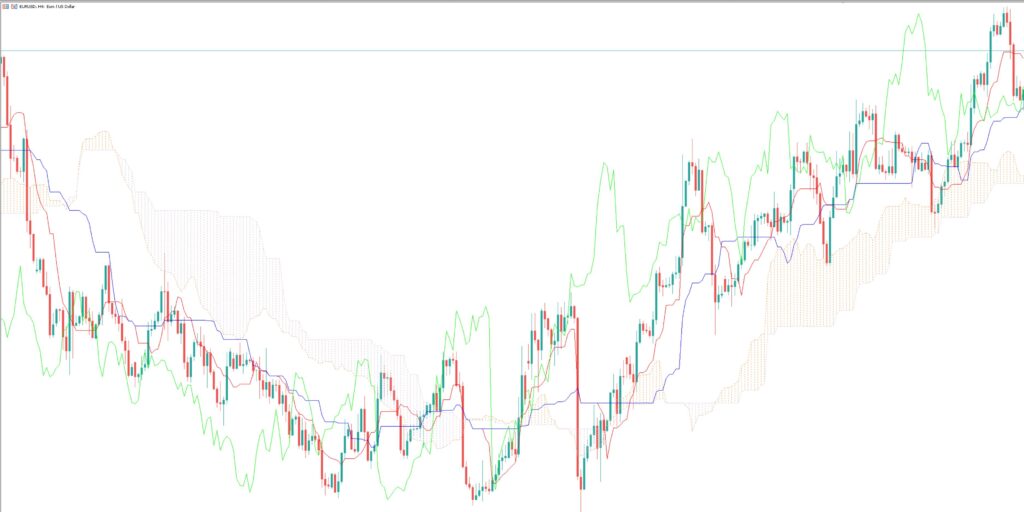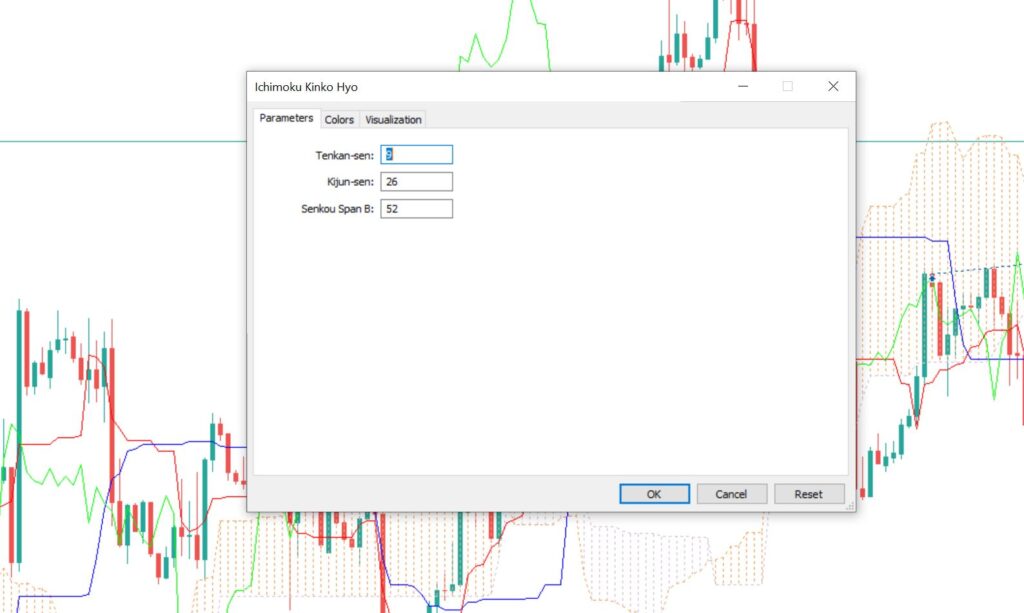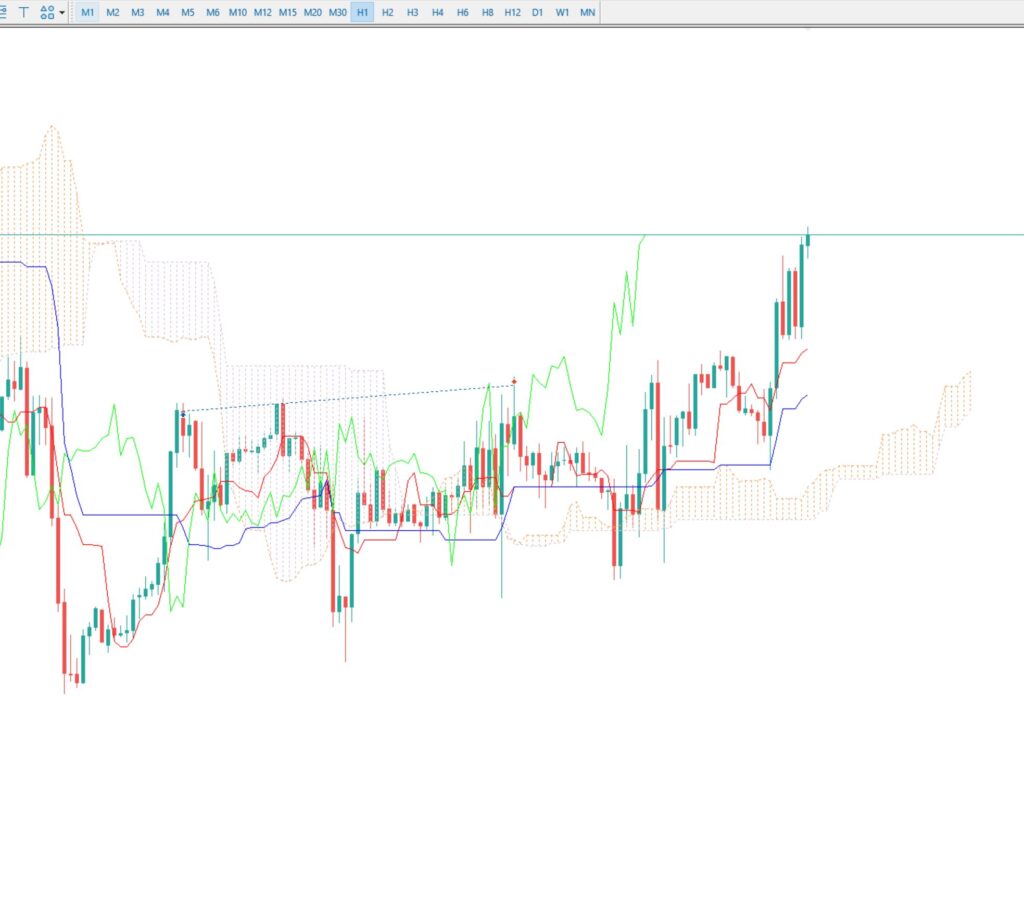The Ichimoku cloud indicator

The Ichimoku indicator is a technical analysis tool that has gained significant popularity among forex traders. It was developed by a Japanese journalist named Goichi Hosoda in the late 1930s and is often referred to as the Ichimoku Kinko Hyo (Ichimoku Cloud).
This indicator is a comprehensive trading system that provides a complete picture of the market’s trend, momentum, and support and resistance levels. It consists of five lines and a cloud formation that visually represent various market data.
The five lines that make up the Ichimoku indicator are:
- Tenkan-sen: This is the fastest-moving average and is calculated by taking the average of the highest high and the lowest low over the last nine periods.
- Kijun-sen: This is the slower-moving average and is calculated by taking the average of the highest high and the lowest low over the last 26 periods.
- Senkou Span A: This line represents the average of the Tenkan-sen and Kijun-sen, plotted 26 periods ahead.
- Senkou Span B: This line represents the average of the highest high and lowest low over the last 52 periods, plotted 26 periods ahead.
- Chikou Span: This line represents the current closing price, plotted 26 periods behind.
The cloud formation created by Senkou Span A and Senkou Span B is called the Kumo or Ichimoku Cloud. The cloud is shaded in green if the price is above the cloud and red if it’s below the cloud.
The Tenkan-sen and Kijun-sen lines act as dynamic support and resistance levels, and their cross can signal a change in trend direction.
When the price is above the cloud, it indicates a bullish market, and traders can look for buy signals when the Tenkan-sen crosses above the Kijun-sen. Conversely, when the price is below the cloud, it indicates a bearish market, and traders can look for sell signals when the Tenkan-sen crosses below the Kijun-sen.
Kijun bounce and Kumo breakout
Traders also use the cloud to identify potential support and resistance levels. When the price is within the cloud, it indicates a neutral market, and traders can use the top and bottom of the cloud as potential support and resistance levels.
One of the essential aspects of using the indicator is to understand the concept of “kijun bounce” and “kumo breakout.” A kijun bounce occurs when the price bounces off the Kijun-sen, indicating a potential support or resistance level. A kumo breakout occurs when the price breaks above or below the cloud, indicating a potential trend reversal.

The Ichimoku indicator is a popular technical analysis tool in forex trading, but it can be prone to lag, especially during periods of high volatility. However, there are ways to customize the indicator to reduce lag and improve its accuracy.
Here are some ways to customize the Ichimoku indicator for avoiding lag:

Shorten the time periods:
The Ichimoku indicator uses longer time periods, which can cause lag. You can customize the indicator by shortening the time periods for the Tenkan-sen and Kijun-sen lines. For example, instead of using the default periods of 9 and 26, you can use 5 and 15, respectively.
Use a smaller cloud:
The cloud formation can also contribute to lag, especially during periods of high volatility. You can customize the indicator by using a smaller cloud formation. You can do this by using shorter time periods for the Senkou Span A and B lines, such as 13 and 26 periods, respectively.
Use a different calculation method:
The default calculation method for the Ichimoku indicator is based on the midpoint of the high and low prices. However, you can customize the indicator by using a different calculation method, such as the closing price or the weighted average price.
Combine with other indicators:
To further reduce lag and improve accuracy, you can combine the Ichimoku indicator with other technical indicators, such as the Relative Strength Index (RSI) or Moving Average Convergence Divergence (MACD). This can help confirm signals and provide additional insights into the market.
Use multiple time frames:
Finally, you can reduce lag by using multiple time frames to analyze the market. By analyzing the market on different time frames, you can get a better understanding of the trend and potential support and resistance levels.

By shortening the time periods, using a smaller cloud, using a different calculation method, combining with other indicators, and using multiple time frames, traders can get a more comprehensive view of the market and make informed trading decisions. However, it’s important to remember that no indicator is perfect, and traders should always practice proper risk management techniques and adhere to their trading plan.
This indicator is a powerful trading tool that provides a comprehensive view of the market’s trend, momentum, and support and resistance levels. It is best applied in forex trading by using it in conjunction with other technical indicators and fundamental analysis to make informed trading decisions. Traders should also practice proper risk management techniques and always adhere to their trading plan to ensure consistent profitability.


